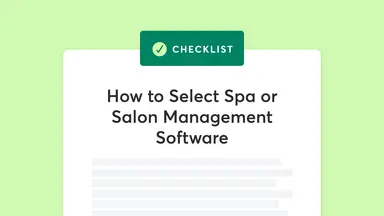
6 Essential Brand Assets to Market Your Business Online
August 1, 2023
There are many different places to promote your business and find new clients online—it all depends on the demographic you’re trying to target. But whether you’re building your social media following, relying on search engine traffic, or running ads, you’ll need a kit of go-to brand assets to help you get the most out of your marketing efforts.
Read on for six essential brand assets you need to effectively market your business online:
1. Visual brand
Your visual brand is more than just your logo—it also encompasses the colors, fonts, image styles, icons, and other visual elements you use. All of these elements work together to create a memorable customer experience, which puts your business in a prime position to succeed long-term. Start with the brand graphic basics, including:
A logo with a transparent background and in high resolution
Brand colors and fonts to keep your marketing consistent
Graphics sized for your social platforms (including your logo) that promote your intro offer
Once you have a solid foundation, you can use a free design tool like Canva to create other consistent marketing materials for your website, social media, and print.
2. Photos
Using high-quality photos is important to pull the whole aesthetic of your brand together. Using real photos, instead of stock imagery, will help you stand out against your competitors. Using photos of yourself, your employees, and your clients can help build trust and create a sense of connection with potential customers, too.
Whether you hire a photographer or snap your own photos (here’s how to D.I.Y. like a pro), there are a few different types of images you'll want to have for marketing content:
Landscape-oriented photos for your website, including shots of your space
Close-up candid style photos of clients enjoying a class or a treatment
Photos of teachers, trainers, or stylists in action
Portrait-style photos of the owners and employees
Close-up detail shots of equipment, props, and room décor
3. Brand bio
Every business should have a snappy, one to two line statement that sums up their brand message. Use these guidelines and be sure to include:
1. Who you are (the name of your business)
2. What you offer (your services)
3. Where you are (where your business is located)
4. What makes you different (how do you stand out from the competition and what is the benefit of what you offer?)
Your brand bio should make it so that even someone who has never heard of your business can instantly understand what you do—and why and where you do it! The good news is, once you’ve honed this valuable bit of text, you can use it in various places including your social media bios, website headline, business cards, and social media ads.
4. Google My Business listing
Creating and updating your Google My Business listing is by far one of the easiest ways to improve your local SEO and put your business on the map (literally). For example, say someone is looking for a barre studio in their neighborhood. If they type ‘Barre studio Houston’ into Google and your Google My Business listing has been optimized, you’ll pop up in their maps results.
Need some guidelines? Here’s how to do it. (Note: Steps 1-3 are for setting up your Google My Business. If you already have a listing, skip forward to Step 4.)
Step 1: Visit www.google.com/business/ and sign in with your Google account, or create one if you don’t already have one (it's free).
Step 2: You will then be prompted to search for your business. If it’s not already on Google Maps, you can add it now.
Step 3: To verify that you’re the business owner, Google will send a postcard to the address you’ve supplied for your business. This postcard will take 1-2 weeks to arrive, and, once it does, it will contain instructions on how to verify that you are authorized to claim your business.
Step 4: Make sure your Google My Business account is populated with the following important details:
Your services
Photos of your business
Contact details
Hours of operation
5. Website
Almost all of your online marketing efforts will lead back to your website, so it’s important to make every page count! A well-optimized website will provide information about your business and create sales and appointment bookings all day (even while you sleep). Some key elements of an effective website include:
Clear navigation
Effective visual branding
Engaging and SEO-optimized web copy
Mobile-optimized design
An irresistible first-time client offer
Download our guide for everything you need to build a website for your business. For more on how to optimize your website for SEO, check out our SEO checklists for fitness, beauty, and integrative health businesses.
6. Killer welcome email
If you're a Mindbody customer, your auto welcome email (the one clients receive when they first create a profile) has a very high open rate (70% of the time in my experience as a Mindbody Consultant). This is one of the most effective ways to make a brilliant first impression with new customers. Be sure to customize the default email in your Mindbody account and include links to your intro offer and website FAQ page so new clients feel welcomed right from the start. Need help updating yours? Here's how.
Bonus asset: Video!
Once you’ve got the basics down, video is a next-level addition to your brand assets. Research shows that using video on a landing page can increase conversions by up to 80%! A short video about your business that leads viewers to your intro offer can be used everywhere you show up online, from your website to social media and even paid ads.
By having these essential brand assets ready to go, you make your online marketing efforts go further and get your business in front of the right customers.



